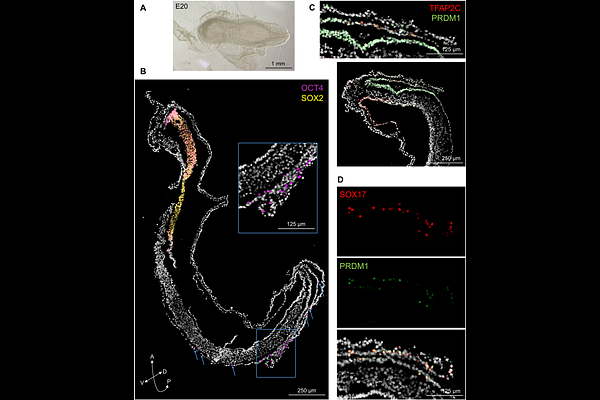Molecular profiling of bovine primordial germ cell specification and migration onset reveals a conserved program in bilaminar disc embryos

Molecular profiling of bovine primordial germ cell specification and migration onset reveals a conserved program in bilaminar disc embryos
Guiltinan, C.; Botigelli, R. C.; Arcanjo, R. B.; Candelaria, J. I.; Lanzon, L. F.; Smith, J. M.; Becerra-Cortes, G.; Denicol, A. C.
AbstractThe goal of this study was to establish the timing and location of bovine primordial germ cell (PGC) specification, as well as the molecular characteristics that differentiate early PGCs from other cells in the embryo. A founder population of PGCs was identified via protein immunolocalization in the posterior epiblast (TBXT+) region at E16, by the unique co-expression of OCT4, SOX17, PRDM1, and TFAP2C with absent SOX2. At E20, PGCs were spread along the allantois and hindgut endoderm, indicative of migration onset. Single-cell RNA-sequencing at E20-22 revealed ten PGCs that were subset using the above markers. Further analysis of this population uncovered conserved and novel markers of the early germline and gave numerous insights into their developmental status, including markers associated with pluripotency maintenance, cell migration, repression of the somatic program, and initiation of epigenetic remodeling. This work establishes the region and transcription factor network of bovine PGC specification at day 16 of embryonic development and the first transcriptomic profile of migratory PGCs in cattle, demonstrating a conserved program with other species that form as a bilaminar embryonic disc leading to gastrulation.